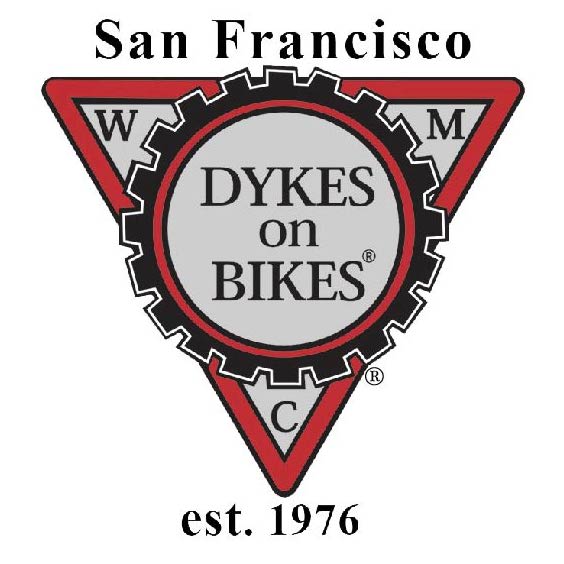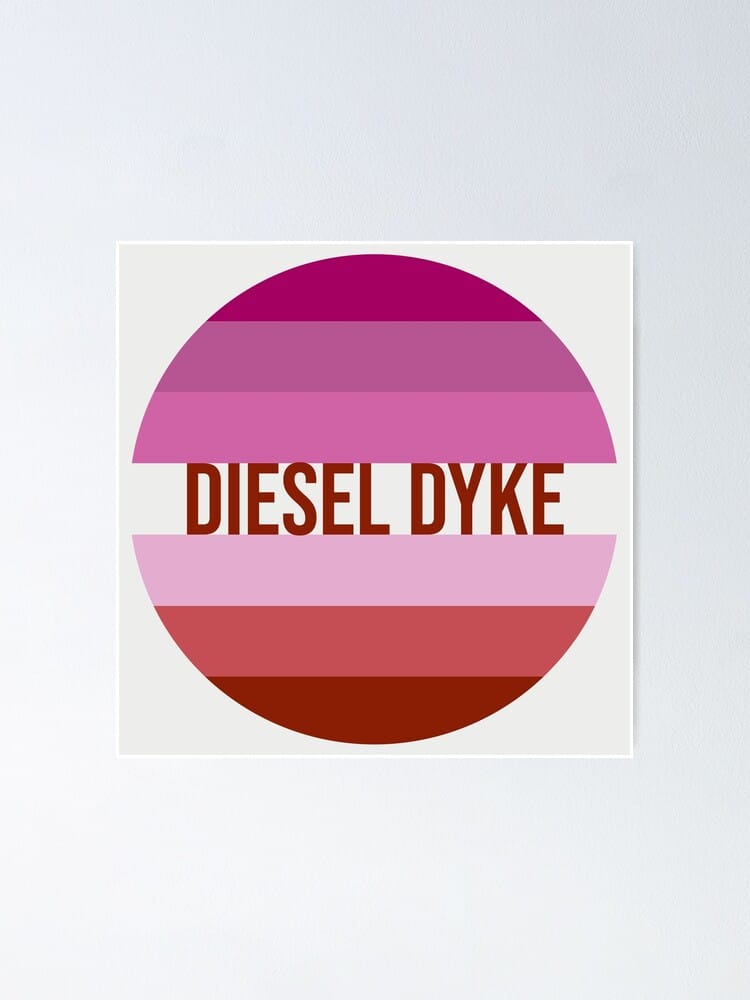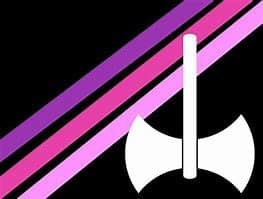Diesel Dyke – What is it? What does it mean?
Diesel dyke is a slang term which typically refers to a large, masculine lesbian who enjoys working with cars and motorcycles. Diesel dykes prefer to date femme women. The term dyke was recently reclaimed by lesbians, but should not be used in an offensive or derogatory manner.
Diesel dykes like working on their vehicles, get sweaty and dirty. A diesel dyke may even resemble a young man with short hair wearing a plaid shirt, work boots, bandana.
Table of Content
Diesel Dyke – What’s in a Name?
What’s in a name? Plenty. We all have given names at birth – names we use to navigate through everyday life. We also have names that we use in other environments. For example, our usernames on our social media accounts usually say something about us – taco tornado, sloth speedster, glitter bomber, etc. Years ago, these were dubbed nicknames, but for new generations they are “handles” or usernames.
So, if we want to look at the term diesel dyke meaning, there’s a lot to unpack. Buckle up.
Defining Diesel Dyke
The term diesel dyke is first and foremost American slang, referring to a specific type of lesbian who is what is commonly known as butch. And a butch lesbian is someone who sports a masculine persona – short hair, masculine clothing and an aggressive approach to being a woman with a sense of power and pride in their gender identity as female but with the caveat of being more like bear gay men than being femme.
In short, the world of a diesel dyke is one of being masculine, aggressive, and “bear” without a dick and someone who seeks a femme partner.
Terminology
There are so many terms related to diesel dyke, and they need to be broken down individually.
Dyke
The term dyke has had a recent history of being a derogatory term referring to the lesbian community in general. The exact origin of the term dyke is still up for grabs, and there are a number of terms that are of similar etymology throughout history. But by the 1950’s it was only used in a derogatory way.
Today, the term dyke has been reclaimed by the lesbian population as a source of lesbian pride, toughness, and assertiveness.
Diesel
Most commonly, diesel refers to a type of engine used primarily in large vehicles – trucks and busses. These are strong and powerful engines, and that is probably why diesel dykes refer to butch lesbians who can be strong, masculine, and even confrontational. But it’s important to note that not all butch lesbians carry this persona. Those who do have the “diesel” mentality, though, do have their own groups, such as motorcycle clubs, (e.g. Dykes on Bikes), and they do march at Pride events in butch, masculine dress.
Bull Dykes
This is another term for lesbians who have a masculine physical and mental persona, referring obviously to the animal who is seen as militant and fearless.
Dyke March
Dyke marches have been occurring for some time now, primarily in North America, but have now spread to the UK and Germany, along with Mexico. These are non-corporate sponsored events, unlike the large events that occur yearly in cities all over the planet. Queer women of other sexualities and many of varied genders also often attend to show solidarity with the larger female population. These marches are advertised as being open to all within the LGBTQ+ community, allies, and every race and ethnicity.
Dyke Bar
This refers to any lesbian bars or clubs frequented by lesbians. The number of these clubs has decreased due to COVID, as did bars and clubs of all types, but a slow resurgence is coming again.
History
Ancient Times
There are references to lesbians, both good and bad, in ancient civilizations. It seems that lesbian relationships were more acceptable in ancient China than they were in many others. The ancient female Greek poet Sappho’s writings are often interpreted to speak to lesbian love and relationships, and some claim that she herself was a lesbian.
Religious Influence
Once Catholicism became the primary religion of all of Europe, lesbianism was thoroughly condemned, and a girl or woman caught was imprisoned or executed. From this point forward, lesbians went “underground.” In the Arab world, lesbianism was considered a matter of heat generated via sexual activity and was not soundly condemned. In the Jewish world, it was fully condemned.
From Illegality to Activism
Throughout the rest of history, there is no doubt that homosexual women continued to exist with varying degrees of consequences if caught. But, as people became more enlightened, it came to be seen as a mental illness and was listed as such by the American Psychological Association and the World Health Organization. And in America and other countries, laws made homosexuality a crime.
Enter Stonewall
June 28, 1969, is probably the most consequential date in LGBTQ+ history. Police raided the Stonewall Inn in Greenwich Village, New York, the site of a known gay bar. Rather than capitulate, the gay community resisted with a series of riots. This set off a nationwide and then a worldwide movement for LGBTQ rights that continues today.
Still, gays were considered to be mentally ill, and any non-heterosexual conduct was illegal. The terms dyke and faggot continued to be pejorative slurs. And for many queer women, secrecy was still required. But they devised ways to “announce” themselves in bars and clubs. One common method was to have a nautical tattoo on their wrists or to paint their ring finger a different nail color.
An American Speech Fosters Change
In 1972, Dr. John Fryer, a gay psychiatrist disguised himself with a wig, mask, and large clothing, spoke before the American Psychological Association, beginning with the words, “I am a homosexual, and I am a psychiatrist.” His impassioned speech led to the APA move to remove LGBTQ identity and sexuality from its list of mental illnesses published in 1973. The WHO followed in 1990. This speech was considered one of the major contributions toward queer rights.
Reclamation of the Word “Dyke”
It was during this time that the queer female community reclaimed the word dyke as their own. Dykes refer to all women whose romantic and sexual attraction is to other women.
The Diesel Dyke Persona Described
Diesel dykes are women who are generally larger in stature, sport short hair, often assume the “persona” of men or masculinity, may have aggressively masculine tendencies, and do, in many cases, ride motorcycles or work as diesel truck drivers – basically masculine lesbians. They dress in clothing with stereotypically male associations, often wearing flannel shirts and work boots. In early adulthood, a diesel dyke may look and behave as a typical rough and tumble but cute young man, or a girl who is definitely wearing clothes associated with “tomboys.”
Femme queer women like the ideas expressed by diesel dykes, especially the symbolic images of trucks with diesel engines – strong and powerful. And hey, they will happily accept a diesel dyke with a bit of oil on her flannel shirt – it’s genuine and authentic.
Flags and Symbols
There is no lack of symbols that represent the diesel dyke community. Here are the most common.
Dykes on Bikes Trademark and Symbols
A bit of history behind this one. When dykes on bikes attempted to register its name in the US, a non-member of the group took them to court, stating that the trademark was offensive and “disparaging to men.” After a three-year court battle, a federal appeals court decided in favor of the group, on the date July 12, 2007, and the Supreme Court left that decision intact. Men who find Dykes on Bikes offensive need to accept the fact that the entire LGBTQ community is proud of this organization with its 22 chapters, its “boots on the ground” activism, and its diesel engine symbolism.
The organization is registered as a 501C non-profit in the US and publicizes its mission and its contributions through charitable acts on its website. A simple Google search will bring up a host of Dykes on Bikes symbols, but here is the San Francisco one:

Diesel Dyke Flags
Diesel dykes may be cisgender, transgender, genderqueer and agender people. The term is not exclusive to AFAB lesbians who have sex with femmes.
So at pride events, generally occurring from June through August, diesel dykes may choose to sport any of the common lesbian pride flags, past or current, or any of the newer ones that have been adopted, with details related to their specific sexuality. Here are a couple of current ones:


Will new diesel dyke flags continue to be designed? Of course.
Am I a Diesel Dyke?
Only you can determine your specific sexuality. You may have identified as a lesbian in general in the past, but now you are thinking you may be a diesel dyke. Ask yourself these questions:
- Do you prefer clothing and hair styles typically “assigned” to men?
- Do you feel a connection with the mission of diesel dykes?
- Do you feel a connection with the diesel dyke mission and/or contribute to its philanthropic causes?
- Do you want to date only femme lesbians?
- Do you pursue jobs and careers typically assigned to men?
If you answer in the affirmative, yes, you indeed may identify as a diesel dyke.
How to Be Supportive of Diesel Dykes
The lesbian butch identity has many sub-categories. Certainly, diesel dykes are one category. So are stone butches, for example, butch lesbians who do not want to be touched or only touched in certain ways by their femme partners but who get sexual gratification via the pleasure of their femme partners.
Whether you are a butch or not; whether you are a member of another group within the LGBTQ+ community; or whether you are simply a straight ally of the entire queer community, you can show your support for diesel dykes and butches in many ways:
- Call out disparaging and demeaning comments made by others in your circle of friends or by any person on social media accounts.
- The words butch and dyke should be used in a positive and supportive way by others. If it is not, call it out.
- Post and re-post positive messages about butch and dyke queer women and ask your friends to share those posts with their tribes.
- Join local and regional chapters of Dykes on Bikes and inquire about how you may promote their mission and causes.
Everyone Has Value and Deserves Respect and Dignity
Queer women who are butch may have different identities; they may enjoy their masculinity and be comfortable adopting the butch “look” with short hair and by wearing male clothing. They have every right to be who they are and love who they choose to love. Our responsibility is to respect and honor everyone’s choices. Let’s see that we do just that as we navigate the complex environment of love, romance, and sex.
Resources
History of lesbianism – Wikipedia
History of lesbianism – Wikipedia
How the Stonewall Uprising Ignited the Modern LGBTQ Rights Movement
The secret gay history of tattoos and their hidden meanings | by James Besanvalle | Medium
Being LGBTQ was long considered a “mental disorder” | Fountain House


